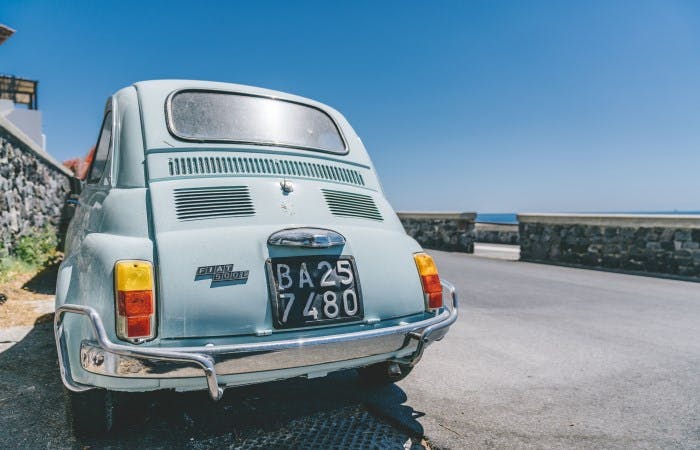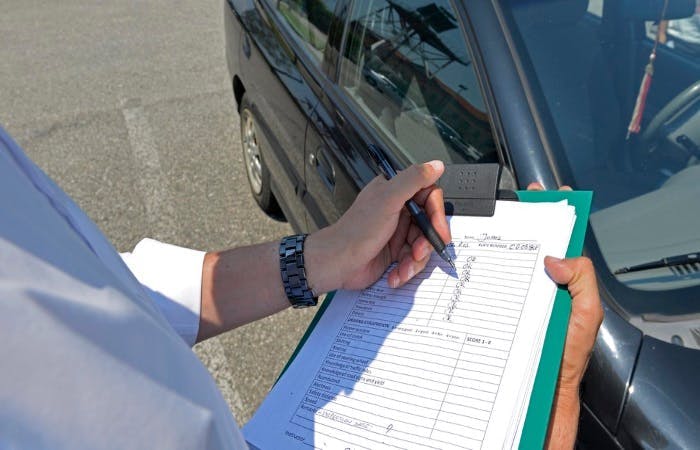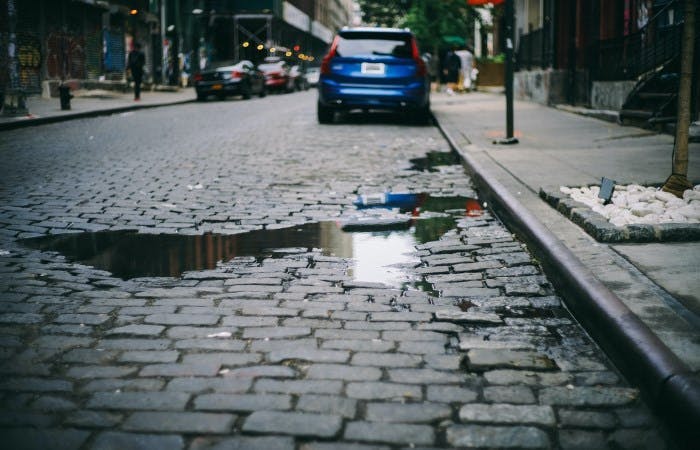
One of the first things you'll learn in a driving lesson is how to pull over safely. Though it might seem like a basic manoeuvre, it's something that actually requires a great deal of planning and awareness. If you're not the biggest fan of having to pull over and move off, you'll be disappointed to hear that you'll be expected to do so multiple times during your driving test. Practice makes perfect, though. So, if you're looking for some tips on how to pull over safely like a pro, you've come to the right place!
In this guide, we're going to break down exactly how you should be pulling over and moving off. We'll also look at what the examiner will be expecting of you as you carry it out.
Pulling over safely
Once you've managed to figure out the basics of the cockpit drill and know which pedals are which, your instructor will likely move you onto one of the most fundamental aspects of driving: pulling over safely and moving off. This is something that the average driver will do countless times in day-to-day life. Meanwhile, pulling over safely will also play a role in your driving test.
Throughout your driving test, the driving examiner will ask you to pull over on the left-hand side of the road and then move off. They will attempt to incorporate a few different conditions as they do this, including:
- Normal stops at the side of the road
- Pulling out from behind a parked vehicle
- A hill start
Now, unless the examiner is asking you to demonstrate the pulling up on the right manoeuvre, you will only ever be asked to pull over on the left side of the road. You can expect to be asked to do so at least twice during your test. As you're driving along your test route, the examiner will say something like this: “When you can, please pull over on the left in a safe place.”
What is the examiner looking for?

As unnerving as it might sound, the examiner will be watching your every move throughout the test. When they ask you to pull over safely, they'll be carefully assessing how aware you are of your surroundings and how safe your chosen place truly is. Throughout the manoeuvre, they'll be keeping a close eye on your control over the clutch and brake pedals, until the very moment you stop the car, apply the handbrake and switch to neutral.
Their main focus will be on the following aspects:
- Awareness and planning: as you prepare to pull over, you will need to use the Mirror, Signal and Manoeuvre (MSM) routine and show an awareness of other road users. You will also need to demonstrate patience and plan ahead when picking a safe place.
- Judgement: you need to show sound judgement when picking a safe place to pull over, ensuring that it is legal, convenient and doesn't infringe on other road users. You'll also need to make your intentions clear to other road users.
- Use of mirrors: when pulling over and moving off, you will need to use all of your car mirrors to ensure it's safe. You will also need to check your blindspots carefully for any road users or potential hazards.
- Accuracy: as you pull over, you will need to demonstrate accuracy when positioning your vehicle parallel to the kerb. You will need to be close to the kerb, without blocking the road for oncoming traffic.
How do I pull over safely?

Step one: find your safe place
Before you start signalling and moving your vehicle, you first need to establish where you intend to pull over. As eager as you might be to follow the examiner's instructions, it's even more important that you follow them correctly. There are three important questions you need to ask yourself whenever you intend to pull over:
- Is it safe?
The examiner isn't asking you to pull over in any old spot: they're specifically asking you to make sure that it's safe. You don't want to get in the way of other road users, or put yourself in a position where you might miss (or become) a hazard. This means that you need to stay clear of junctions and bends. You'll also want to avoid parking opposite a bus stop or another parked vehicle, as it will make it difficult for other motorists to move past you.
- Is it legal?
Here's where your theory test knowledge will come in handy. When picking a spot, you need to also make sure that it's legal. For starters, you can't park your car within 10 metres of a junction. You also can't park next to a bus stop, in a cycle lane or on double yellows. If you're driving near a school, you'll want to be even more careful with your choice.
- Is it convenient?
One factor you might not have considered when choosing a place to park is whether or not it is convenient for other road users. If you park in front of someone's driveway, for example, you could end up blocking them in or out—making it incredibly inconvenient for them. Always think about how your decision might affect you, your passengers and other road users.
Step two: MSM routine
The Mirror, Signal and Manoeuvre (MSM) routine is one of the most fundamental skills of learning to drive. If you don't use it when you're on the road, you shouldn't be on the road. It's the key to staying safe on the road and keeping other road users safe. No matter what you're doing on the road, whether it's approaching a roundabout or parallel parking, you need to use MSM.
- Mirrors: check your side mirrors and interior mirror to see if you have enough time to pull over. If there's a cyclist coming up on your left, or there's a motorist tailgating you, it might be wise to wait a bit longer.
- Signal: as soon as you think it's safe to proceed, you need to use your indicators to signal your intention to pull over on the left. If you decide that it's no longer safe to pull over, make sure you cancel your indicators promptly.
- Manoeuvre: it's now time for you to make your move. Slow things down and switch to first gear. As you start to move, it's important that you check your mirrors and blindspots again to make sure nothing has changed since you last checked. (There's no such thing as playing it too safe on the road!)
Step three: pull over
As tempting as it might be to turn the wheel fully left, you need to approach your safe place at a shallow angle. If you're going at it too steeply, you're likely to hit or mount the kerb—something that will leave you with a serious driving test fault. Doing so can also make it difficult for you to get your vehicle parallel to the pavement.
So, steer shallowly to the left and slowly make your approach to the kerb. As you get close to the kerb (around 20 to 30 cm away), it's time for you to straighten things up. Start to adjust the steering wheel and straighten up the wheels accordingly. You'll want to get your vehicle as straight as possible, as it will make things easier for you when moving off. Once you're happy, stop the car, apply the handbrake and select neutral gear.
Step four: move off
Once you've pulled over safely and stopped, the examiner will tell you to move off in your own time. In most cases, they'll say this almost immediately after you've stopped. You need to be careful here. This is the part where many learners start to panic and rush, eventually leading them to stalling the car. You don't need to hop to it as soon as their instructions have left their lips. Take your time.
Before you start to change gear, disengage the handbrake or indicate, you need to check your mirrors and blindspots carefully. The road is always changing and you do not want to miss a thing. Work in an anti-clockwise motion—check your right shoulder blindspot, right-hand mirror, interior, left-hand mirror and left shoulder blindspot. Once you feel that it's safe, select first gear and signal left.
Next, complete one final check to ensure that nothing has changed on the road. If all is clear, it's time for you to put your foot down gently on the accelerator, disengage the handbrake, steer and release the clutch. You can move off when it's safe to do so.
What if I'm moving off from behind a parked vehicle?

Moving off from behind a parked vehicle isn't much more difficult than doing so on a stretch of clear road. The main difference is that you're going to have to be even more on the ball with your control over the vehicle. As long as you've left a sizable gap between your vehicle and the one parked in front of you, you should have enough space to manoeuvre out.
Once the examiner has told you to move off, you need to check your mirrors and blindspots before signalling your intention to move. Next, you'll want to switch to first gear and move the clutch up slightly so that it's at or just above the biting point. You want to stay in complete control here. If you move the clutch up too quickly, you run the risk of jolting forward and potentially colliding with the vehicle in front. As you disengage the handbrake, you need to steer gently. Try to maintain a door's distance from the parked vehicle, all the while keeping an eye on oncoming traffic and your mirrors.
What if I'm moving off on a hill?

Plenty of learners struggle with hill starts, so don't be too disappointed in yourself if the mere thought of demonstrating one has you trembling. It's all about preparation and practice. After the examiner gives you the go ahead to move off, you need to put your foot down on the accelerator and move the clutch up higher to avoid rolling back.
Before you start to move, you need to check your mirrors and blindspots. Once you're sure it's clear, it's time for you to signal, switch to first gear, disengage the handbrake and move off. Try to maintain control here, as the examiner will want you to move off without rolling back and/or excessive engine revolutions. As you'll need more power going uphill, you'll need to stay in first gear for a bit longer than you would on flat roads.
And there you have it! You've now mastered the ins and outs of pulling over safely and moving off! As you'll be asked to pull over at least a few times during the test, it's important that you make sure you memorise and follow the above steps to the letter. If you let anything slide, you could end up with a minor or serious fault.
FAQs
1. How many times will I be asked to pull over during the driving test?
You'll be asked to pull over on the left side of the road at least twice during your driving test. You may also be asked to do so before you start the independent driving section. This will give the examiner an opportunity to explain what will happen in the next section before you proceed.
2. What should I do if I think I'm going to hit the kerb?
Slow things down! If you ever feel like you're about to lose control of the vehicle, brake slowly and try to adjust accordingly. To avoid hitting the kerb when pulling over on the left, it's always best to steer shallowly towards the kerb—if you try for a steep turn, you'll either hit the kerb or end up struggling to straighten up your vehicle.
3. Will the examiner get out to check how close or far I am from the kerb?
No. The driving test is only 40 minutes long, so the examiner will not have time to get out of the car to check the position of your vehicle every time you stop. Examiners have plenty of experience under their belt, so they'll be able to simply use the side mirror to gauge how close or far away you are.
4. Will I fail if I hit the kerb?
It all depends on how hard you hit the kerb. If it's only a slight tap, the examiner might not even notice. Alternatively, they might decide to let it slide if they feel like you've performed well so far. It's entirely their decision. If you spring forward and mount the kerb, however, it will be an automatic fail. That's why it's important that you stay calm and take your time.
5. What should I do if I think I'm parked too far into the road?
If you've stopped the car, only to realise that you're far from the kerb, you should mention it to the examiner—ask them if you would be able to make adjustments to correct it. They may then allow you to do it, or tell you that it doesn't matter. As long as you show an awareness of your position and the road, the examiner should be happy.
6. What if I can't find a safe place?
The whole point of the examiner asking you to pull over in a safe place is to gauge how well you plan ahead and your overall awareness of road safety. If you're driving and you can't spot a safe place up ahead, keep on driving until you find one. Of course, if it takes too long, the examiner will likely repeat their instruction and urge you to pull over as soon as possible.
7. What happens if a vehicle parks in front of me after I've pulled over?
In this case, you'll continue on with your test. As long as the vehicle is stationary and the driver or passenger(s) aren't in your way, you can proceed with moving off. You will, of course, need to be even more careful with your observations. If it's a tight squeeze then you'll want to take your time.
8. What happens if there's a lot of traffic when I'm trying to move off?
If you've been asked to pull over in a busy area, you might find that there's a lot of traffic when the time comes for you to move off. In this case, you'll simply have to be patient and wait for an opportunity. Of course, you'll need to be sensible about it. Don't take too long—if you don't move when an opportunity arises, the examiner could give you a driving test fault for undue hesitation.
9. What should I do if I see pedestrians or other road users?
You need to take appropriate action. If you see road users in the spot you intended to pull over in, then you need to abort the manoeuvre and continue driving. (If you've already signalled your intent, then cancel it and continue on.) If you're about to move off, but pedestrians have suddenly appeared near your vehicle, wait for them to pass before you continue. Stay on top of your observations at all times!
Subscribe for driving advice, offers & more
We'd love to let you know about our courses, news and offers via email. You may unsubscribe at any time.
Star Genie Limited trading as PassMeFast. Company number 10093359
Copyright © 2024 owned by Star Genie Limited
PassMeFast, Blue Tower, MediaCityUK, Salford, M50 2ST
